

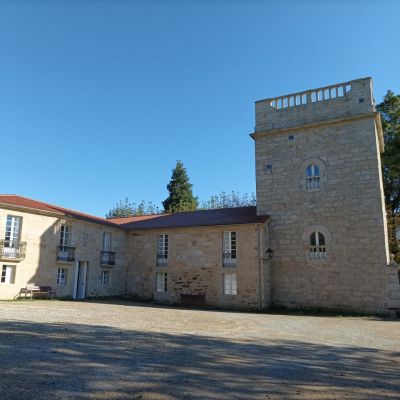
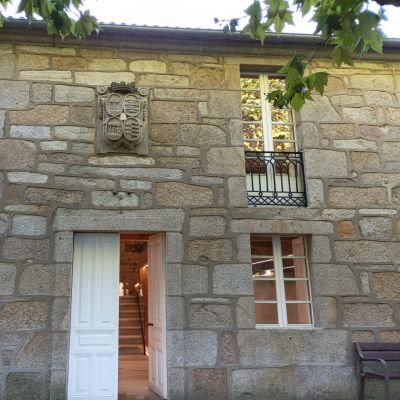
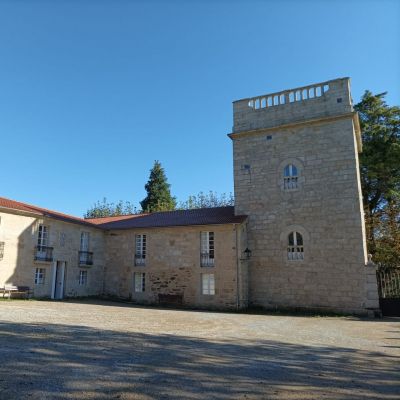
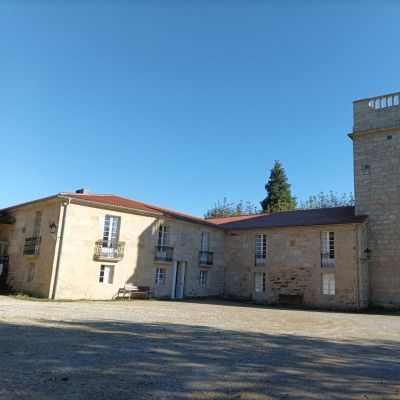

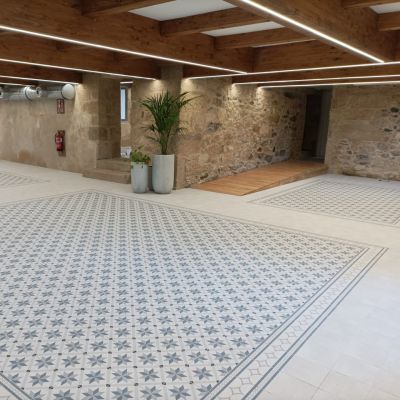
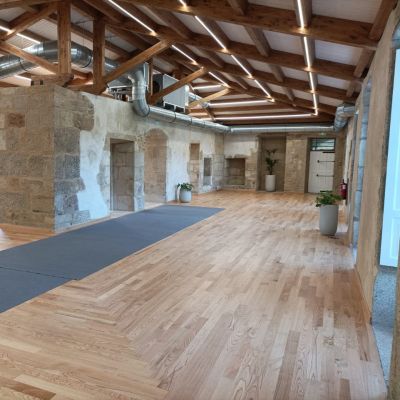











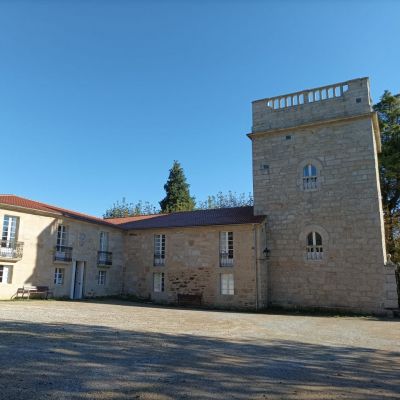

The Goiáns farm occupies an area close to one hundred and twenty thousand square meters and is bordered to the south by the Coroño river inlet.
Inside it houses many items of interest. Among them, the tower attached to the Pacega residence stands out, a symbol of Boiro and as such incorporated into its shield. Other elements of this complex are the chapel, the cellars, the dovecote, the granary, the fishing grounds and the jetty.
The House of Goiáns was established as a morgue in one thousand five hundred fifty-two, at which time its heritage was inextricably linked.
The founders of the manor were the Mariños, nobles who managed to grow socially thanks to a process of patrimonial expansion based on the accumulation of agricultural income by different means; dowries, purchases, inheritances and, among the most important, formal contracts.

The oldest deed that mentions the house of Goiáns dates from one thousand three hundred twenty-one, a time when they also had other lands in Boiro, Ribeira and half of the island of Sálvora.
The aristocratic residence has a curious plan in the shape of an el, very sober that is far from the canons of the baroque palaces of the coast. In the shield that we find over the door that leads to the patio, we can distinguish in the first quadrant the waves of the sea that represent the Mariño family that founded the Morgado de Goiáns in 1552.

The old fortress-like tower dates from the fifteenth century or earlier. It can be said that the Tower is one of the main and oldest elements of the Palace on which the entire building rises in its shape. The style we see today is from the eighteen century when the Tower underwent a major renovation, with the nineteenth century terrace balustrade.
The rooms inside the tower are covered by a ribbed vault and to access the terrace you have to climb some narrow stairs.

On the east façade of the Palace is the main door that would give way to the so-called noble garden where the typical symmetrical French garden was located where decoration through flowers and hedges prevailed. You can still see a round fountain in the center that previously had a statue of a mermaid, linked to the legend of the Mariños and the Island of Sálvora. In the southern part of the garden we see a stone gazebo that once had a stone basin with water in the center.
The exotic trees in this garden include: two avocados, a palm (before there were two), a brachichito, a species of Australian origin, and an American orange, a very rare tree that produces orange-scented fruit. but which is not really from the citrus family.
In the area of the main patio, behind the wall on the right, we find two large Japanese camellias next to a persimmon tree, and behind it we can see a sasanqua camellia of approximately hundred years that stands out above all for its large size. , unusual for this species.
Near the estuary we find an autochthonous forest made up of hundred-year-old holm oaks, laurels, hazelnuts and butcher's broom, a protected shrub that produces a round, red fruit from which the pita of the mountains feeds.
But without a doubt, a tree that particularly attracts the attention of the farm is the impressive cork oak, about three hundred years old, that stands next to the door of the jetty.

Pazo de Goiáns enjoys a privileged location with direct access to the sea through the jetty and the partial conservation of the old fishing grounds.
The pier was key in commercial exchanges since food, construction material, merchandise entered through there; and also the cattle that went to Sálvora, the wine that was regularly sent to their owners in Santiago and Ferrol, and the oysters that were grown on the land itself and taken to different monasteries as dowry for the daughters of the House.
Fishing: At the mouth of the Coroño River you can still see remains of the walls of the old fishmongers that served as a continuous supply of fresh fish for the Pazo.

At the end of the eighteen century century, the Goiáns house had a very important wine production, obtaining more than 15,000 liters of wine. This immense production made it necessary to have presses for pressing the grapes and a cellar, where the bottled wine was stored.
Wine was mainly sold in the two taverns they had in the parish of Lampón; and a small amount was sent to the residences of the lords, especially the main one in Ferrol.

The Chapel was founded around one thousand, six hundred, thirty by Don Jorge Varela de Castro Sotomayor and was initially dedicated to the cult of Saint George. It corresponds to a chapel with a single nave without a transept, small but sufficient to house those who accessed it, the masters of the house, servants and housekeepers. The lords accessed the hermitage directly through a porticoed walkway with a railing and a cover to avoid going outside and protect themselves from the weather.
From the time of the last inhabitants of the palace, the residents remember the image of San Cristóbal, that of San Joaquín, that of San Amaro and a slightly larger carving of the Virgen del Buen Camino.